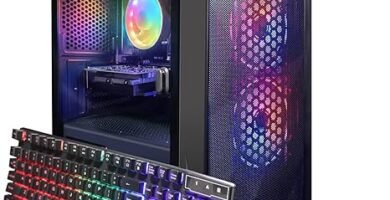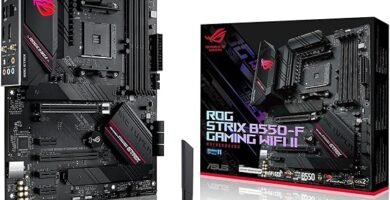Dedicated Graphics Memory: What It Is and Why It Matters
Dedicated graphics memory, often referred to as Video RAM (VRAM), is a type of memory used exclusively by the Graphics Processing Unit (GPU) in a computer. This memory is separate from the system’s main memory (RAM) and is crucial for rendering graphics-intensive applications, such as video games, 3D rendering, and video editing. In this article, we’ll explain how dedicated graphics memory works, its importance, and the differences between VRAM and system memory.
What is Dedicated Graphics Memory?
Dedicated graphics memory, or VRAM, is designed to store and quickly access the graphics data that the GPU needs to render images and videos. Unlike integrated GPUs, which share system memory (RAM) with the CPU, dedicated GPUs have their own memory, allowing them to handle higher workloads without impacting the overall system performance.
The amount of VRAM in a GPU can vary widely, from 2GB in entry-level GPUs to 24GB or more in high-end GPUs, like the Nvidia RTX 4090 or the AMD Radeon RX 6900 XT.
Why is Dedicated Graphics Memory Important?
1. Graphics Rendering and Gaming:
In gaming, VRAM is critical for rendering high-resolution textures, shadows, and real-time effects like ray tracing. Higher amounts of VRAM allow for smoother frame rates and higher quality textures, especially in modern AAA games.
2. 3D Modeling and Video Editing:
In professional applications such as 3D modeling, video editing, and animation, VRAM is essential for handling large files and high-resolution assets. For example, editing 4K or even 8K video footage requires a significant amount of VRAM to ensure smooth playback and real-time editing.
3. Multiple Monitor Setups:
Using multiple high-resolution monitors requires more VRAM, as each monitor increases the workload on the GPU. GPUs with higher dedicated graphics memory are better equipped to handle multi-monitor setups, especially for productivity and gaming.
VRAM vs. System RAM: What’s the Difference?
VRAM is specialized for graphics processing, while system RAM handles general computing tasks. Here are key differences:
- VRAM is optimized for fast read/write cycles that are needed for graphics processing, while system RAM is optimized for general multitasking.
- VRAM stores data related to textures, frame buffers, and shaders that the GPU needs for rendering, whereas system RAM is used by the CPU to manage applications and processes.
Having more VRAM allows the GPU to store more complex textures and handle higher resolutions without swapping data back and forth from the system RAM, which can slow down performance.
How Much Dedicated Graphics Memory Do You Need?
The amount of VRAM you need depends on your use case:
- For Casual Users:
If you’re primarily using your computer for web browsing, watching videos, and light gaming, a GPU with 2GB to 4GB of VRAM should suffice. - For Gamers:
Modern gaming at 1080p typically requires 4GB to 6GB of VRAM, while gaming at 1440p or 4K demands 8GB to 12GB or more, especially if you’re using high-resolution textures and playing AAA games. - For Creators and Professionals:
Video editors and 3D modelers working with 4K or 8K content will benefit from 8GB to 16GB of VRAM. In extreme cases, such as virtual production or AI development, you may need 24GB or more of VRAM.
Leading Brands and GPUs with High VRAM
- Nvidia: The GeForce RTX and Quadro series offer some of the best options for gaming and professional workstations. The RTX 3090 and RTX 4090 boast up to 24GB of VRAM, making them ideal for 4K gaming and intensive workloads.
- AMD: The Radeon RX series is known for offering great performance per dollar. The RX 6900 XT comes with 16GB of VRAM, making it suitable for high-end gaming and creative applications.
- Intel: With the recent introduction of Intel Arc GPUs, Intel is entering the dedicated graphics market, targeting mid-range users who need solid performance without breaking the bank.
Conclusion
Dedicated graphics memory is essential for any application that requires intensive graphics processing, such as gaming, video editing, and 3D modeling. The right amount of VRAM ensures smooth performance and allows you to run graphics-intensive applications at higher resolutions and with greater detail. Whether you’re a casual gamer or a professional content creator, having enough dedicated graphics memory is key to getting the most out of your system.







